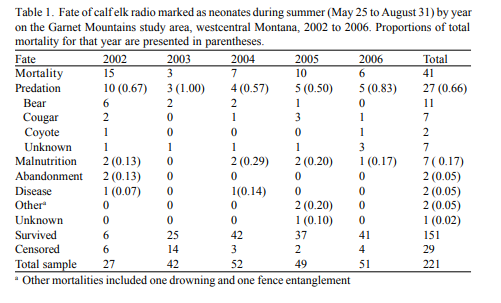COEngineer
Well-known member
- Joined
- Jul 6, 2016
- Messages
- 1,513
There was a short piece in the most recent Bugle issue that stated something along the lines of, "If a cow dies during the first year of a calf's life, the calf has a near 0% chance of survival." I looked online for some data to back that up and can't find anything. There are lots of studies on calf mortality, but none that have specific correlation to the lack of a mother, at least that I could find. Anyone have a reference?





